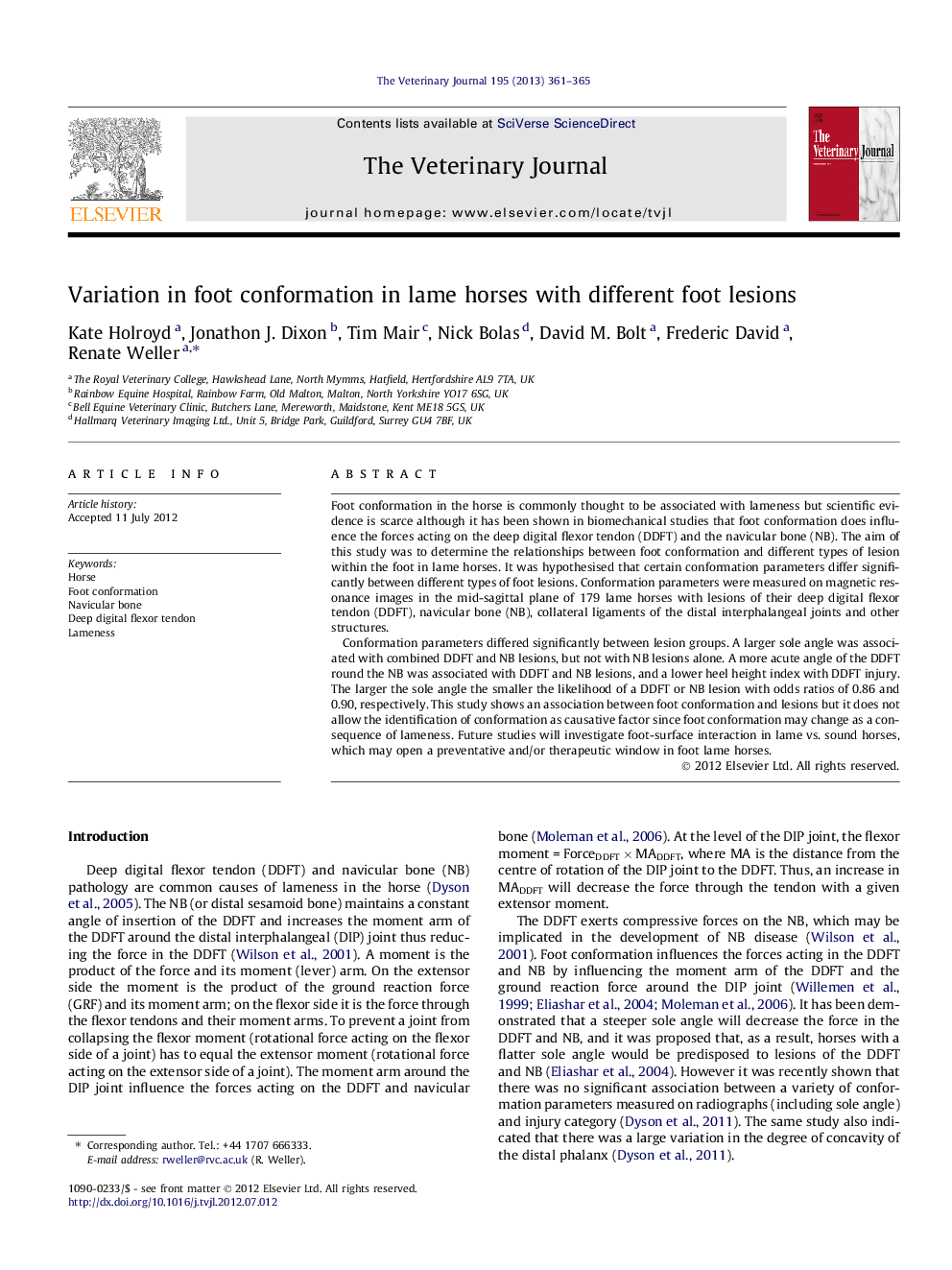| Article ID | Journal | Published Year | Pages | File Type |
|---|---|---|---|---|
| 5798814 | The Veterinary Journal | 2013 | 5 Pages |
Foot conformation in the horse is commonly thought to be associated with lameness but scientific evidence is scarce although it has been shown in biomechanical studies that foot conformation does influence the forces acting on the deep digital flexor tendon (DDFT) and the navicular bone (NB). The aim of this study was to determine the relationships between foot conformation and different types of lesion within the foot in lame horses. It was hypothesised that certain conformation parameters differ significantly between different types of foot lesions. Conformation parameters were measured on magnetic resonance images in the mid-sagittal plane of 179 lame horses with lesions of their deep digital flexor tendon (DDFT), navicular bone (NB), collateral ligaments of the distal interphalangeal joints and other structures.Conformation parameters differed significantly between lesion groups. A larger sole angle was associated with combined DDFT and NB lesions, but not with NB lesions alone. A more acute angle of the DDFT round the NB was associated with DDFT and NB lesions, and a lower heel height index with DDFT injury. The larger the sole angle the smaller the likelihood of a DDFT or NB lesion with odds ratios of 0.86 and 0.90, respectively. This study shows an association between foot conformation and lesions but it does not allow the identification of conformation as causative factor since foot conformation may change as a consequence of lameness. Future studies will investigate foot-surface interaction in lame vs. sound horses, which may open a preventative and/or therapeutic window in foot lame horses.
